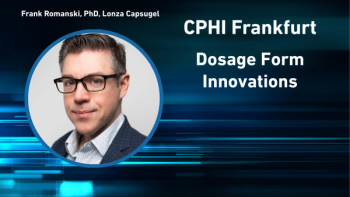
- Pharmaceutical Technology-03-02-2007
- Volume 31
- Issue 3
Getting under Our Skin: The Evolving Field of Transdermal Delivery
The book is written for drug-delivery scientists experienced in the dermatological or transdermal fields.
Until recently, only small and lipophilic molecules could penetrate the skin. But, recent advances in transdermal drug delivery have opened the skin barrier to hydrophilic molecules and macromolecules, including peptides and proteins. Pharmaceutical applications like vaccination and insulin delivery are already in the pipeline of many transdermal drug-delivery companies.
Harvinder Singh Gill
The book Skin Delivery Systems: Transdermals, Dermatologicals, and Cosmetic Actives brings together recent advances in the cosmetic, dermatological, and transdermal fields into a single volume to enable cross-disciplinary learning and innovation.
About half of the book, namely the first three sections, is devoted to a discussion of the cosmetic and dermatological fields, including the recent active agents. The topics examined in the first three sections include the cellular and molecular basis for skin reactivity, dry-skin and antiwrinkle treatment, and corneotherapy—a treatment modality of the stratum corneum to relieve dermal disorders.
The remaining half of the book, the last two sections, provides a brief review of the newest drug-delivery technologies for topical skin and systemic delivery. These sections are of most relevance to Pharmaceutical Technology readers interested in transdermal drug delivery. In them, the authors describe some of the latest drug-delivery methods such as emulsions, polymer-based skin-delivery systems, and nanoparticles for delivery of molecules to the skin. Iontophoresis and ultrasound are mentioned only briefly.
The book concludes with a discussion of chemical enhancers and some of the recent transdermal drug-delivery technologies such as pulsatile drug delivery and microneedles. The authors also describe the potential of new high-throughput screens to search quickly for better chemical enhancers.
Skin Delivery Systems is written for scientists experienced in the dermatological or transdermal fields. Since only recent advances in transdermal drug delivery have been described, readers may like to refer to basic transdermal drug-delivery texts such as Transdermal Drug Delivery, edited by R.H. Guy and J. Hadgraft (New York, Marcel Dekker, 2003, 383 pp., ISBN 082470861X) for fundamental knowledge in the field. Furthermore, many transdermal delivery systems such as sonophoresis, iontophoresis, and other physical approaches only receive a brief mention, and the book lacks detailed discussion of these subjects.
Skin Delivery Systems: Transdermals, Dermatologicals, and Cosmetic Actives, John J. Wille, Ed., Blackwell Publishing, Ames, IA, 2006, 404 pp., ISBN 9780813808482.
Overall, the book covers a broad variety of topics. It would further benefit from a chapter that synthesized the breadth of information into a vision for the field. This synthesis would help readers better appreciate the interdisciplinary connections between the cosmetic, dermatological, and transdermal delivery fields, and encourage cross-disciplinary innovation.
Harvinder Singh Gill is a research associate at the Georgia Institute of Technology, 315 Ferst Dr., Atlanta, GA 30332, tel. 404.385.1314,
Articles in this issue
almost 19 years ago
Shifting Patterns in Sourcingalmost 19 years ago
Maintain Your Moving Partsalmost 19 years ago
The Pharmaceutical Industry Looks to Reduce Waste by Getting Leanalmost 19 years ago
Packaging Trendsalmost 19 years ago
March 2007almost 19 years ago
Accelerating Drug Developmentalmost 19 years ago
What Will It Mean to the Patient?almost 19 years ago
Pursuits of Businessalmost 19 years ago
The Advantages of Restricted-Access Barrier SystemsNewsletter
Get the essential updates shaping the future of pharma manufacturing and compliance—subscribe today to Pharmaceutical Technology and never miss a breakthrough.




